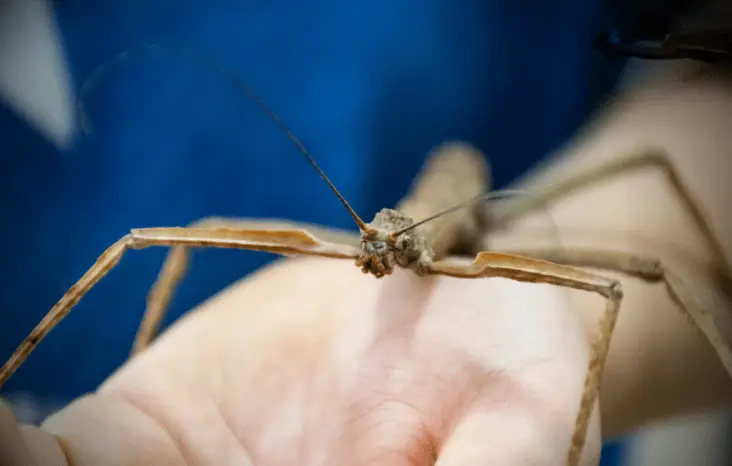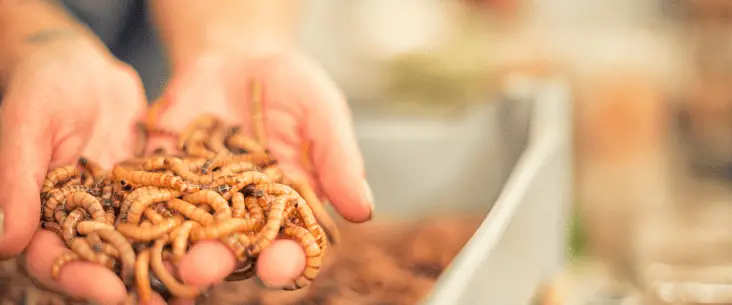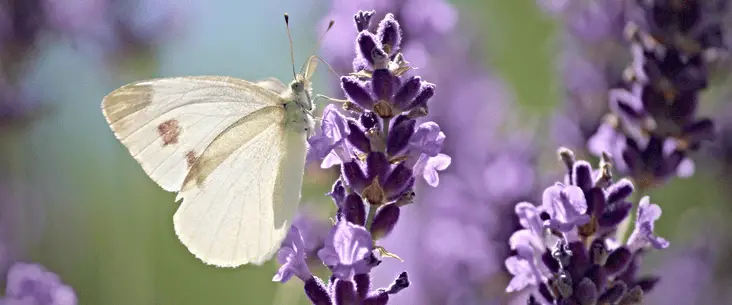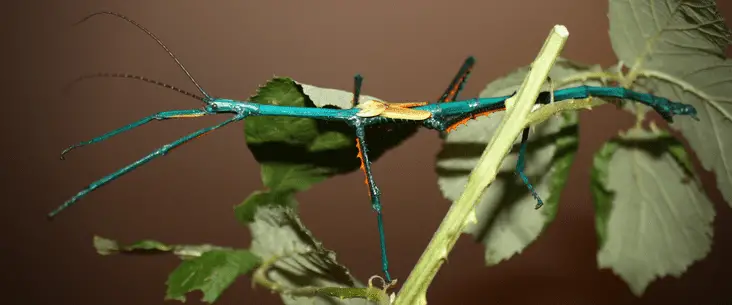Like to keep stick insects as pets? But wondering what species of the around 300 available species is suitable for you as a complete beginner? With all the information available on all the different species, it is difficult to make up which species are easy to keep compared to others. Well, let me help you. In this article, I recommend you six beautiful stick insect species that are exciting but still easy to take care of. Let’s get right into it!
The best stick insects species for absolute beginners are:
- Indian stick insect (Carausius morosus)
- Thorny stick insect (Aretaon asperrimus)
- Giant prickly stick insect (Extatosoma tiaratum)
- Bud-wing stick insect (Phaenopharos khaoyaiensis)
- Pink-winged stick insect (Sipluloidea sipylus)
- Yellow flying stick insect (Necroscia annulipes)
Now you have the list of species that are suitable for you. But let me explain more why these are good stick insect species for beginners and talk more about these amazing stick bugs. If you find a species that you like, also read the article about the basics of what you need as a new keeper for keeping stick insects.
What is the best stick insect for beginners?
With more than 300 species kept in captivity and over 3000 species in the world, you probably understand that not every stick insect has the same needs. Stick insects live all over the world and have owned different ecological niches, adapted to the climate and food availability of that area.
Some species are very picky and will not thrive unless the climate condition and food are exactly what they prefer or require. To start with these species can be very overwhelming. You have to learn already so much and increase your experience, it is difficult to also focus on all those little details.
Other species are easier to keep because they stretch a larger area or the environment match that of our living rooms. They are not that sensitive to temperature variation and air humidity. Some species live from a wide variety of food and accept different food sources quite easy. These species are more forgiving when not everything is exactly right and they will swiftly adapt to how you keep them. As a beginner, these species are better to start with.
So, to summarize, I would advise new keepers to start with stick insect species that:
- Don’t have high requirements for environmental conditions or food sources
- Don’t stress quickly and are easy to handle
- Don’t have defence mechanisms that can harm you
- Are easy to find in the pet trade.
With that in mind, which species do I recommend for absolute beginners? Here are my 6 recommended species!
6 stick insect species that are good first pets

#1 Indian Stick Insect (Carausius morosus — PSG 1)
The Indian stick insect (Carausius morosus) is an excellent beginners species. They are very easy to keep, feed and breed. They are one of the best stick insects to handle and are very easy to find in the pet industry. It is one of the most popular stick insect species.
They are not too big and don’t need much space. With a body length of 5cm to 8cm, you can keep a couple of them already in an enclosure of 20cm x 20cm x 30cm. What makes them such perfect beginners species is that they almost eat any plant leaves: bramble, raspberry, blackberry, oak, privet, ivy, hawthorn, rose and hazel.
You can house them at room temperature. They need some humidity, so spray the plants you feed with some water to raise the humidity and at the same time provide some drinking water for them. Now, these species can breed without mating (called parthenogenesis). Females will lay fertile eggs that are exact copies of her.
Oftentimes I see eggs of this species available for free because they are available at so many places. So it is easy and cheap to start with them. Also the perfect species for kids or for school classes.
Downsides? Some people find this species a bit boring. Although their behaviour is quite interesting and they are still very nice to observe, they don’t have very strange shapes or colours.
#2 Thorny Stick Insect (Aretaon asperrimus — PSG 118)
The second species that deserve a spot on this list is the thorny stick insect (Aretaon asperrimus), not to be confused with the giant thorny stick insect or giant spiny stick insect. These are very easy to keep and feed on a wide range of different plants like bramble, raspberry, blackberry, oak and ivy.
These are not so large and “only” grow up to 8cm (at least the females, males are smaller). However, the size is well made up for by the impressive looks of this amazing species. Although its body covered with thorns looks intimidating, they won’t harm you and are quite docile and calm. They almost never run away in stress or attack you in any way.
They need high humidity and a moist substrate when you wish to breed. So spraying daily is recommended. Because of their small size, they don’t need much space. You can keep a small group of them in a terrarium of 20cm x 20cm x 30cm.
#3 Giant Prickly Stick Insect (Extatosoma tiaratum — PSG 9)
Another popular species in the pet trade: the giant prickly stick insect (Extatosoma tiaratum), also known as Macleay’s spectre stick insect, Australian walking stick or the spiny leaf insect. Especially the heavy-bodied females are very impressive. Both males and females are covered in harmless thorn-liked spikes as part of their defence but primarily for camouflage.
These stick insects can become quite large with females grow up to 20cm. Their size and shape are quite impressive, and in colour, they can be light-brown to greenish-brown. Because of their size, they need a larger enclosure than the others. You can start with a small group in an enclosure of 30cm x 30cm x 45cm.
These species are easy to care for and accept different plants like bramble, raspberry, blackberry, rose and oak. They also breed very easily.
They are widely available and there are many breeders who sell this interesting species. Be aware, the much thinner males have fully-developed wings and will sometimes fly. However, flying is quite clumsy. Be careful, when you have an open window they can fly off.
If you like a larger and more impressive stick insect, this may be the species for you!
Related read: Giant Prickly Stick Insect: A Practical Care Guide
#4 Bud-Wing Stick Insect (Phaenopharos khaoyaiensis — PSG 215)
These medium-large stick insects are very easy to keep due to their low requirements for temperature and humidity. You can keep these species at room temperature and don’t need much humidity. You only have to spray them slightly to provide them with some drinking water.
You can keep a couple of them in an enclosure of 20cm x 20cm x 30cm, although a bit bigger is recommended. These species are known to be very calm. Because they are a bit larger and thicker, you can easily handle them without stress runs or playing dead.
They feed on bramble, raspberry, blackberry and hawthorn.
Breeding with them is also very easy. You only need a male and female (although they can also breed asexually) and eggs are dropped on the floor. Within 4 to 6 months they will hatch and this species has a very high hatching rate.
A beautiful species to start with!
#5 Pink-Winged Stick Insect (Sipyloidea sipylus — PSG 4)
However, if you like an easy stick insect with a bit more colour, you should definitely check out the pink-winged stick insect (Sipyloidea sipylus). As the name suggests these have bright pink coloured wings. Although the body has similarities with that of the Indian stick insect, as soon as they spread their wings you see the beautiful colours.
Funny enough, nymphs of this species are bright green coloured. So even before being adults, they are quite beautiful to look at.
This species is quite easy to care for, however, it must be mentioned that this species can be quite stressful and is less suitable to handle. They can run very quickly when startled. These stick insects have fully-developed wings and are able to fly or glide.
But on the other hand, these are some of the easiest to feed, almost eating any type of leaves: bramble, raspberry, blackberry, hawthorn, rose, oak, rhododendron and salmonberry.
Still, among the coloured ones, this is a really easy species to start with in the world of stick insects.
#6 Yellow Flying Stick Insect (Necroscia annulipes — PSG 290)
The last on the list is a very special one. Although ‘Yellow Flying Stick Insect’ is not the official name, Necroscia annulipes is the most colourful of this list of beginners species. It is widely available because of its beautiful colours and in my opinion, it is one of the most stunning looking stick insects.
Although it is not the easiest of this list, it still is very easy to feed and breed with compared to other stick insect species. They can be fed mostly privet, but can also be fed olive, cinnamonum, jasmine, osmanthus, and lilac. Breeding is very easy because of the high hatching and survival rate. They are quite hardy species.
However, adults are not suitable to handle. They quickly want to try and fly off. Nymphs can be handled, but that is only because they freeze as a defence, and often let themselves fall. It is best to look at their beauty when they are inside their enclosure feeling safe.

What about other stick insect species?
And with Necroscia annulipes, we end the list with the 6 most beginner-friendly species I recommend for absolute new stick insect keepers. And what about all the other stick insect species. In my opinion, they are a bit harder to keep, or feed, or breed. As a new stick insect keeper, you could best start with the 6 mentioned species.
I would not start with leaf insects (Phyllium spp.) as first-time phasmid owners. However, there are more species that, if you are truly motivated and do the research, you can succeed in keeping. I can only encourage you to keep digging in all the information about stick insects and leaf insects. A good start would be this article about the biology of stick insects.
Are these species also suitable for kids?
The species mentioned in this list are safe for children, although not all species are suitable to be handled. Never let your kid do the care of the animals on its own. Always take supervision when your kid is feeding them and controlling the climate in the enclosure (like spraying water).
However, it can be a good starting point for the first pet for your kid. Your kid can learn the responsibilities of keeping pets and learn more about the wondrous world of insects. And I can tell you, it is much cheaper and easier than the care of dogs and cats. In fact, in my opinion, every kid should have a pet insect! Check out the article where I explain why.
Much more to learn!
There is much more to learn about stick insects. For example, do stick insects need a substrate? You can find more articles about stick insects with plenty of practical tips to better understand and enjoy the keeping of stick insects as a pet.
Share this page!



